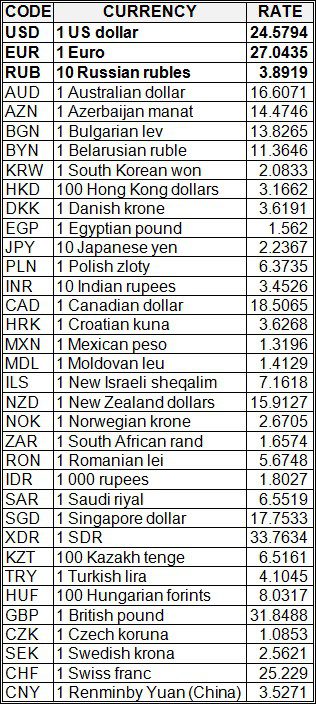
The Cabinet of Ministers of Ukraine has temporarily appointed board member Željko Marček acting board chairman of JSC Ukrzaliznytsia (Kyiv).
Government decree No. 65-r dated February 5, 2020 has been posted on its website.
Earlier the government approved the dismissal of Ukrzaliznytsia Board Chairman Yevhen Kravtsov without transferring him to a new position.

JSC Ukrzaliznytsia, the German national railway operator Deutsche Bahn AG and DB Engineering & Consulting GmbH (DB E&C) have signed a memorandum of understanding regarding strategic partnership for the development of Ukrzaliznytsia.
The document was signed in Kyiv on February 5 with the participation of Prime Minister of Ukraine Oleksiy Honcharuk and member of the board for infrastructure at Deutsche Bahn AG Ronald Pofalla, an Interfax-Ukraine correspondent reported.
“We emphasized that within the framework of our cooperation, we will primarily focus on consulting… And we are confident that our cooperation will be successful,” Pofalla said when signing the document.
According to the text of the memorandum, “the parties agreed to study and develop a concept and a plan in order to provide DB E&C with the opportunity of providing the critical managerial and technical assistance to Ukrzaliznytsia (except for issues related to military transportation).”
The memo does not contain the final conditions and all issues on which agreement should be reached between the companies for the purpose of strategic cooperation.
Moreover, according to the document, neither party is liable for any direct, indirect or consequence losses (loss of profit, inability to use or loss of business opportunities).
The memorandum is concluded for a period of three years. The estimated period of strategic cooperation is up to ten years.
“At the first stage, we are talking about cooperation in the consultation field. But we hope that over time we will come to deeper forms of cooperation… I hope this will be the next step in building reliable cooperation between Ukrzaliznytsia and Deutsche Bahn,” Honcharuk said.
In turn, the representative of Deutsche Bahn said that the German company went through the path of privatization, which allowed it to become a successful carrier.
On the part of Ukrzaliznytsia, the memorandum was signed by board members Željko Marček and Remigiusz Paszkiewicz, on the part of Deutsche Bahn – Pofalla, on the part of DB E&C – Chairman Niko Warbanoff.
Commenting on the difference between the memorandums – signed in Davos and the current one, Minister of Infrastructure Vladyslav Krykliy said that today’s document implies more specific options for interaction between the companies.

Real growth of Ukraine’s GDP in 2020 would accelerate to 4% from 3.2-3.3% in 2019 with a flight rise in inflation from 4.1% to 5.2%, Dragon Capital Investment Company (Kyiv) has said. “Now the situation is very good in Ukraine, one of the best for 20 years of our stay here,” Tomas Fiala, the head and founder of the company, said at the presentation of the macroeconomic forecast of the European Business Association (EBA) in Kyiv.
According to him, in 2021, the company expects a slight slowdown, to 3.7% with inflation of 6.1%.
Fiala said that Dragon Capital predicts that the hryvnia will strengthen this year on average to UAH 24/$1 compared to UAH 25.80/$1 last year.
He added that, according to the company’s expectations, the exchange rate at the end of this year will be about UAH 24/$1, and at the end of the next – UAH 25.5/$1.
According to Fiala, such an economic growth with the hryvnia strengthening has already increased its U.S. dollar-pegged GDP from $90 billion in 2015 to $150 billion in 2019 and, tentatively, to $175 billion this year.
He said that this allowed reducing public debt from 80% of GDP to 51% of GDP and allows us to expect an increase in the credit rating of Ukraine by another 1-2 points in 2020.
The head of Dragon Capital said that among the main risks for the forecast is the refusal to cooperate with the International Monetary Fund (IMF), which is extremely dangerous in the conditions of Ukraine’s dependence on external financing and the deterioration of the global situation, especially in the grain and metal markets.

Japan’s Rakuten, owning the Viber messenger, is expanding its presence in Ukraine, according to a posting on the website of the Ministry of Digital Transformation of Ukraine after a meeting of Deputy Ministers of Digital Transformation Oleksandr Borniakov and Valeria Ionan with Executive Vice-President of Rakuten Yasufumi Hirai and Viber Chief Operating Officer (COO) Ofir Eyal.
According to the report, Rakuten is opening a R & D center in Kyiv and developing the existing office in Odesa.
“The event was a continuation of negotiations between President of Ukraine Volodymyr Zelensky and the founder of Rakuten, Hiroshi Mikitani, which took place in June 2019. Then, Mikitani appraised the State in a Smartphone initiative and expressed his readiness to increase his investment activity in Ukraine,” the Ministry of Digital Transformation said.
Rakuten is a Japanese e-commerce company. In 2014, Rakuten acquired Viber for $900 million.
National bank of ukraine’s official rates as of 07/02/20

Source: National Bank of Ukraine